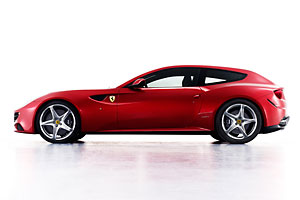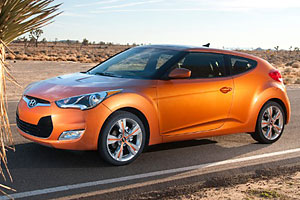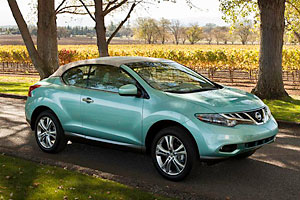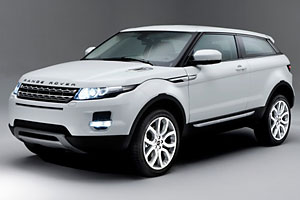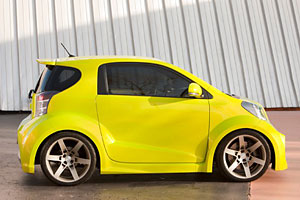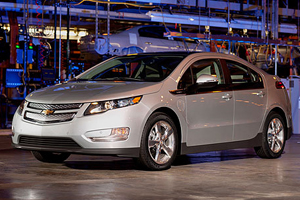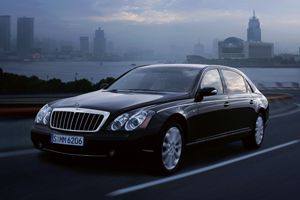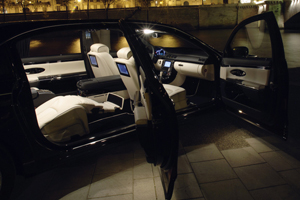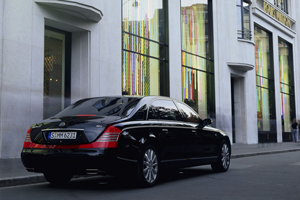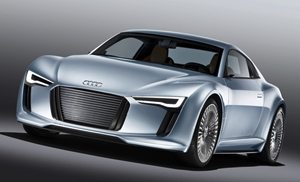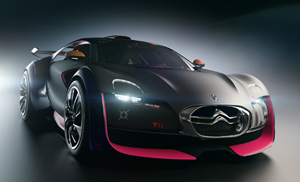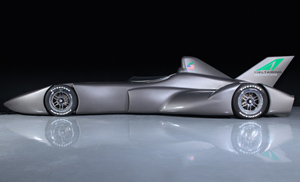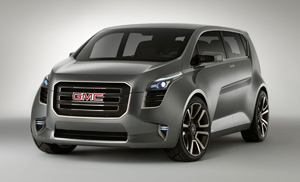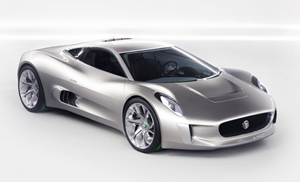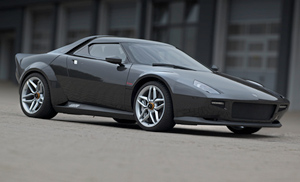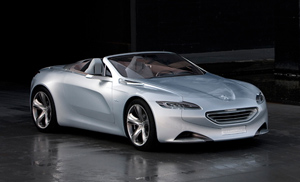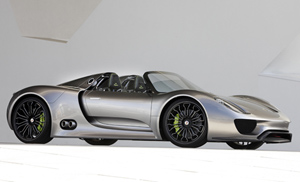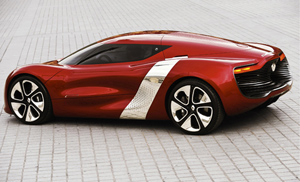If you've ever been pulled over for speeding, you know it feels like you're a gazelle that just got taken down by a lion.
And, while this recession, and the gaping budget holes that resulted, have turned most cities into a jungle for motorists, there are some cities that have far more speed traps than others. And automated traffic cams have only egged them on. Now, they can snag just as many motorists for speeding, if not more, with less manpower.
It's hard to get this information from the police or the courts for two reasons: 1) Many tickets are negotiated in court and 2) speed limits, while originally designed to conserve fuel during the energy crisis of the 1970s, have grown into a cash cow for states and municipalities—and they don't want you to know how much they're making off of speeding tickets.
"Speed limits are supposed to be based on factual studies of traffic and what the majority of motorists deem as a safe speed," said Chad Dornsife, director of the Highway Safety Group . "Now, the posted limit has become a revenue generator—not a safety device."
The National Motorists Association, a drivers' rights group, estimates that speeding tickets are a $4.5 to $6 billion industry in America.
To be clear, speeding tickets aren't just for lead foots: In some places, they'll ticket you for going one mile over the speed limit and others set the speed limits artificially low.
"In some places, the average speed limit is set 10 to 15 miles below the actual safe speed for conditions," Dornsife said. "It makes technical violators out of people otherwise driving safely."
10. Los Angeles, California
Speed traps: 151
Los Angeles is a great example of speed limits not matching at all what traffic patterns indicate is a safe speed—which is how they're supposed to be determined.
Most of the speed traps are on the boulevards in the valley, my L.A.-based colleague Jane Wells, who writes the Funny Business blog, says. "The speed limit is 35 but if you actually drove that, you'd get mowed down!" Wells says.
Fines and surcharges for speeding or failing to have proof of insurance can approach $1,400, the NMA reports. And good luck fighting a ticket in L.A. It's always been tough, but with the city teetering on the brink of bankruptcy, motorists don't have a chance.
"If you walk into a courtroom, because of the massive deficits at every level, they can't let a breathing person walk out without taking their money!" Dornsife said.
9. Chicago, Illinois
Speed traps: 153
Chicago now uses red-light cameras to nab motorists for running lights and speeding, which increases the city's ticketing power. And, while, speed limits are supposed to be determined by engineering studies, Dornsife notes that the last study on one red light speed trap here was done in 1994 and the Department of Transportation deemed the safest speed was 43 miles per hour. The posted limit? 30.
Dorsnife notes two problems here: First, some of the traffic-control devices are 20 and 30 years old. And second, on the interstates, local politicians control the speed limits—and the enforcement in the courts. So, good luck fighting a ticket.
Barnet Fagel, aka "The Ticket Doctor," noted one particularly tricky speed trap: Motorists have to drive at a snail's pace leading up to the entrance to Lake Shore Drive, which then opens up into a six-lane highway. A half-mile in is the speed trap, where the speed limit is 40 and police nab drivers just as they're starting to pick up speed. "Comparable divided highways carry higher speed limits by as much as 10 to 20 mph more," he said.
8. Dallas, Texas
Speed traps: 156
Dallas is one of three Texas cities that made the top 10 for speed traps.
"Here's what happens in Texas: We have these safety standards that you have to apply to make sure the speed limit is safe," Dornsife said. "They follow none of them! They have what's called "home rule," which means they don't have to follow federal law."
Dornsife said it's not uncommon here for tickets to be issued for drivers going just a few miles over the speed limit.
Also, good luck keeping up with fluctuations in the speed limit on a given road. Dornsife recalls being at a DOT speed-limit conference and a presenter from Dallas said there are sections of the freeway where the speed limit can change three to four times within a few miles.
And speed limits can be changed arbitrarily: "Somebody stands up in a city council meeting … say, a police officer with no training in traffic engineering … and proposes a speed-limit change and they vote on it," Dornsife said. "Traffic engineers are supposed to decide what speed is safe—and law enforcement is supposed to enforce it," he said. "Half of these cities don't have traffic engineers."
7. Orlando, Florida
Speed traps: 165
You're less likely to break the speed limit on your daily commute than you are on vacation, where you're in a strange place and don't know the laws or the speed traps, Dornsife says. So, Orlando, home of Disney World and Universal Studios and Sea World, benefits from a steady stream of tourists—and revenue from speeding tickets.
"Orlando definitely has speed traps," said Amy Mariani, a former traffic reporter for Clear Channel Radio. Some of the worst ones, she said, are Colonial Drive (State Route 50), where the speed limit constantly changes, the Beachline (State Route 528) as motorists drive west from the airport (That's right, they get you straight from the airport!) and I-4, especially downtown near the Millenia Mall.
Plus, Dornsife says, Orlando was one of the early adopters for red-light cameras—they were using them even before state laws allowed them to. In the first three months, he says, the cameras here generated 700 tickets.
And, they're tough: One motorist noted on Speedtrap.org that officers on motorcycles often snag motorists in a short school zone for doing three to four miles over the speed limit.
6. Denver, Colorado
Speed traps: 165
Colorado, like Texas, has "home rule," where cities don't have to comply with state laws. As a result, traffic on some roadways indicate 35 to 40 miles per hour is safe and yet the speed limit has been set at 25, or 55 is safe and yet the legal limit has been set at 40.
One Denver driver said that many roadways have been designed far bigger than they need to be, which facilitates higher rates of speed. Then they post low speed limits and BAM! They can snag you for a speeding ticket.
And they're tough: They have speed cameras everywhere, that resident said, and they'll even nail you for going an inch over the line at a light.
Jayson Luber, the traffic reporter for 7News at ABC affiliate KMGH, said officers will even wait for drivers riding in the exit lane who dart back into other lanes at the last minute, and nab them for crossing a white line. He said holiday weekends are the worst but police are out in full force year round.
5. Jacksonville, Florida
Speed traps: 175
Florida takes the prize for the state where motorists are most likely to get a speeding ticket, according to a survey last year by the NMA.
One man told News4Jax.com that he wasn't surprised. "I probably passed 30 cops on the way down here, so they were sitting there waiting to get everybody that's for sure," he said.
Jacksonville, in particular, is known for speed traps where multiple drivers are pulled over at once, often by unmarked police cars, and motorists can be charged for going 5 mph over the limit. And, they get low marks on informing motorists of the speed limits.
"Many of their streets are horribly underposted," Dornsife said of Jacksonville. "Some of the signs they use there aren't even legal devices—they're supposed to be a particular size, format and shape," he said.
4. Colorado Springs, Colorado
Speed traps: 186
Remember, Colorado has "home rule," where municipalities don't have to follow state laws, and Colorado Springs takes full advantage of it.
To their credit, they fully disclose how tough they are: They state publicly that drivers will be penalized if they drive 1-4 miles over the speed limit, 5 to 9 miles over, 10 to 19 miles over, 20 to 39 miles over and 40 or more miles over (Literally, they break it down that far). They also state that "one's intent is irrelevant," which means they don't care if you didn't mean to speed, had a broken speedometer or have oversized tires. These situations are "Not a defense to speeding."
Colorado Springs drivers write on Speedtrap.org that often police use unmarked vehicles. And, like Denver, wide roads are often slapped with a 25 mph limit and entering the city from the southeast, one motorist notes, the speed limit drops quickly from 55 to 25.
3. Las Vegas, Nevada
Speed traps: 187
They say what happens in Vegas stays in Vegas and tourists find out all too soon that applies to speeding tickets as well!
Speed traps are common on the highways heading into and out of Las Vegas, Dornsife said. Department of Transportation records indicate traffic could handle 80 mph but a 70 mph zone is strictly enforced. Even side streets have traffic stops, one motorist noted on Speedtrap.org.
Dornsife added that anytime there's a budget crisis, the number of tickets written out seems to go up. And, good luck trying to fight them in court, especially when the city is still struggling financially.
2. Austin, Texas
Speed traps: 189
The second entry from Texas in the top 10 is Austin, which one motorist described as practically a police state. Remember that here, they have "home rule," so municipalities don't have to follow state laws—and it seems they've taken that invitation to go quite seriously off the script.
That motorist said he was ticketed for going three to four miles per hour over the speed limit in a school zone, and when he was going 83 in an 80 mph zone.
There are serious speed traps at the northern and southern city limits, motorists note on Speedtrap.org, with many noting that everyone they know seems to have a couple of tickets. One woman wrote that she received a ticket and took a driver's education course to eliminate it. A clerk called her a year later and said the ticket was now a warrant and the fine had been increased. Luckily, she had her paperwork to prove it had been eliminated. She also noted that she'd seen three cars pulled over at once.
1. Houston, Texas
Speed traps: 373
And the winning city is from … Texas!
Seriously, the speed traps in Texas are so bad, Dornsife said, "any place in Texas could be No. 1."
Drivers note on Speedtrap.org that there are traps set at the Houston city limits and near attractions like the Astrodome. And, the speed limit can change rapidly and dramatically. One motorist wrote that entering the city on Highway 59 North, the speed limit dropped suddenly to 55 from 70. Just as the motorist noticed the speed-limit change on his GPS, BAM! There was a speed trap.
The number of tickets was even more staggering when the economy was bad: In March of last year, KTRK Channel 13 found that Houston police officers wrote about 3,000 tickets per day, or 147 an hour!
TrafficTicketSecrets.com says the average speeding ticket in the U.S. is about $150. Multiply that out and that's $450,000 a day—and $14 million for the month.
Corrections: An earlier version of this story had a driver anecdote that wasn't from Las Vegas. It also quoted Chad Dorsnife as saying Dallas sets school zones a few miles away from the school; he was actually referring to some small towns in Nevada.
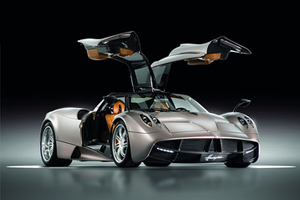 Named after Huayra Tata, an ancient God of wind, the Huayra has a six-liter, 12-cylinder engine with two turbochargers built by Mercedes-Benz’s AMG performance unit, which is responsible for the German company’s most powerful models. The engine breathes through a pair of air intakes behind the occupants that the company describes as “a tribute to the supersonic aircraft of the late 1950s and 1960s.” They were designed to allow air into the engine without unnecessarily disturbing aerodynamics.
Named after Huayra Tata, an ancient God of wind, the Huayra has a six-liter, 12-cylinder engine with two turbochargers built by Mercedes-Benz’s AMG performance unit, which is responsible for the German company’s most powerful models. The engine breathes through a pair of air intakes behind the occupants that the company describes as “a tribute to the supersonic aircraft of the late 1950s and 1960s.” They were designed to allow air into the engine without unnecessarily disturbing aerodynamics.


